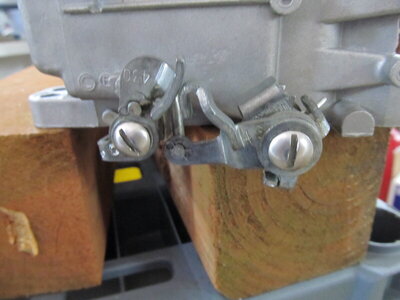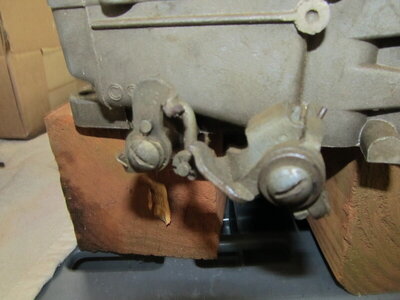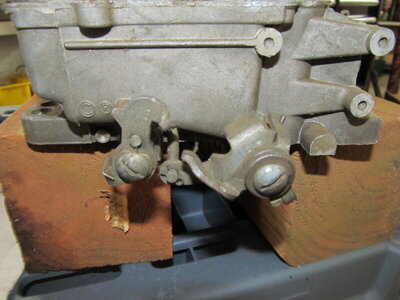I don't know about an epoxy lasting, my experience with thermoquad wells was eventually everything failed but maybe for that it would work, or some newer glue tech.
If I was going after that I would find a tapered reamer that was close and long enough, or have one made or make one, grind the seat in the bore out with a ball burr, tig the hole up and leave it a little proud as you do not need every last cfm race car deal. I would then take a brass screw the same thread as the mixture screw, center drill it to make a guide to drill the initial hole, then do the same and make a guide for a reamer. The issue with reamers is they tend to be too long and fat so you have to cut it off and weld a new shaft to it so it will fit thru the threads and not damage them, hard to get it straight. An old mixture screw with a groove cut with the thinnest demel cutting disc and the threads machined off would work for a reamer, and may be smarter. I would buy 3-4 junk parts afbs to get good at the welding and drilling first. That should leave you with 1/8" of usable seat taper and should work, I have seen worse damage work.
I would make sure the idle feeds are not drilled, throttle plates are closed, air bleeds are not drilled, and it is not drawing fuel out of the transition slots, and there are no other fuel leaks before I went after that as I don't think those seats are the biggest problem, but have been wrong before. On tuning this I would give it a lot of initial timing, find a way to add idle air below both carbs, to be sure the blades are shut, a set of carb spacers with a hole drilled where both sets of primaries are with a small ball valve works to be sure the throttle blades are shut, for tuning.
At that point you may find those damaged seats are not that big of a deal. I would also play with restricting the idle fuel with a piece of wire until the idle cleaned up before doing anything with the idle seats.


















